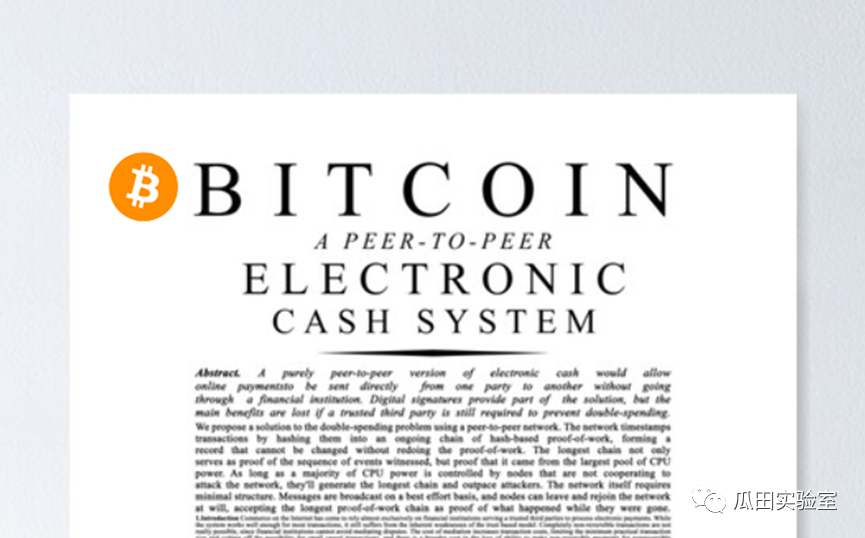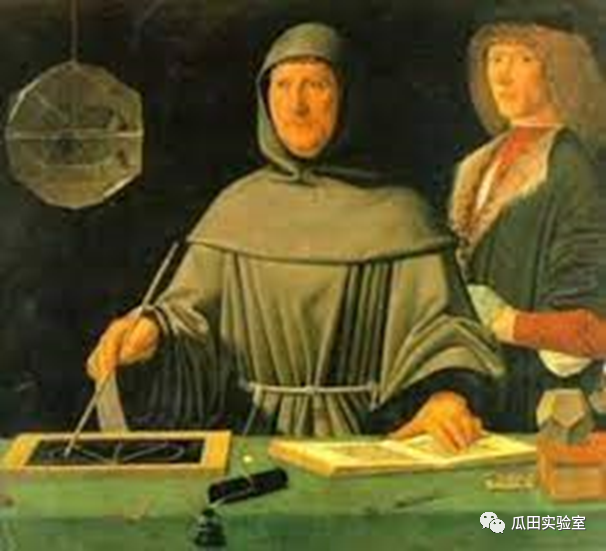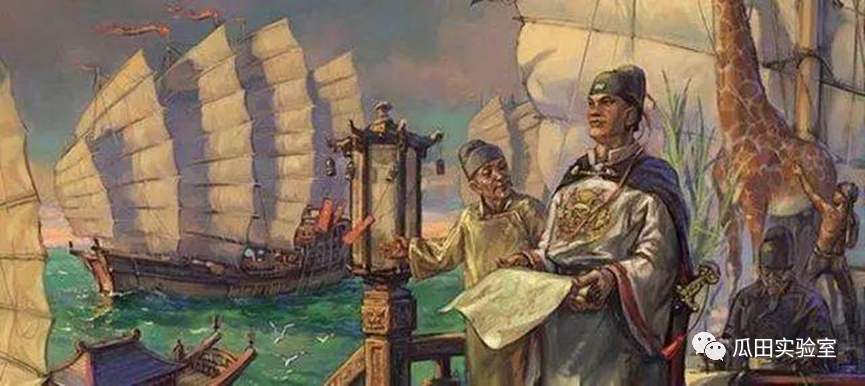Can AI Trigger the Fifth Technological Revolution? (Part 2)
AI and the Fifth Technological Revolution (Part 2)【Preface】This article is a supplement to the previous one. There is no wealth password, no project case, and the style is still based on real stories. I write whatever comes to mind. Just bear with me and read it.
3. AI is the spear, and blockchain is the shield
I was one of the first players to try ChatGPT3.5. At that time, I felt that it was just for the sake of novelty. Compared to my friends who write code or do design, the impact on me was not so strong. Because when I tried to ask GPT about the economic model of chain games, it just used some web2 games or 2021 Gamefi1.0 era Axie to fool me. I was a little disappointed and excited. It seems that W Labs’ research on the economic model of chain games is still very advanced. Even GPT cannot find relevant data, and cannot iterate.
At the same time, I asked GPT some gossip about history, politics, economics and other sub-fields, and found that the information given can basically be found by Google. However, if you want to further summarize, explore and sublimate with it, it will start to talk nonsense with me again, seemingly understanding, but the content is boring and not nutritious.
But ChatGPT is very helpful for friends around me who write code, write press releases, and do design, and it also has a great impact on the business of Internet companies. Several well-known domestic game companies we are familiar with are evaluating the introduction of AI into the consideration of costs in the workflow. If labor laws or moral factors are not considered, basically 20-50% of positions can be cut in the R&D and design lines.
- Comprehensive Explanation of the Shoal Framework: How to Reduce Bullshark Latency on Aptos?
- Financing Weekly Report | 18 public financing events; Gensyn, a blockchain-based AI computing protocol, completes $43 million in Series A financing, led by a16z.
- Blockchain Capital: Looking Ahead to the “Consumer Era” of Cryptocurrencies
This is also an argument for AI technology that may sound the fifth horn of the technological revolution: AI development should be able to replace most of the “brick-moving brainpower” type of work, and for “creative brainpower” type of work and “practical physical strength” type of work, the impact is relatively small, and they can also become their efficiency assistants. And as we said before, the liberation of a large amount of brainpower will be released to other scientific fields, triggering the quantitative change to qualitative change upgrade of other fields. This trend should be irreversible. Currently, ChatGPT3.5 has only 175 billion parameters, and ChatGPT4 is said to have 100 trillion parameters (OpenAI’s CEO came out later and said that this data is incorrect, but he did not say how much it is). The information I found from Google is that the human brain has 60 trillion nodes. Can AI’s parameters reach this level to be comparable to the human brain? As a technical layman, I dare not say so. I can only say that the era of true strong artificial intelligence (that is, general artificial intelligence) should be realized within 20 years, and the prediction of OpenAI internal employees after the vote is around 2035.
In the future, strong artificial intelligence will have a tremendous impact on productivity. What kind of production relations can be suitable for it? In March of this year, Meng Yan’s article “In the Age of Strong AI, is there still room for blockchain?” gave me great inspiration. He emphasized that “human beings need to legislate strong artificial intelligence with blockchain, and restrict it externally instead of signing a contract with it.” My understanding is that AI is responsible for developing productivity, and blockchain is responsible for building production relations and limiting AI to work within a limited range. Behind AI is code, and behind blockchain is also code. Using code to restrict code feels reasonable.
So why can blockchain become a production relationship that is compatible with AI productivity? Let’s review the essence of blockchain:
The first is that the decentralized distributed ledger reflects openness and transparency, and cannot be changed, preventing bad actors from doing bad things under the table.
The second is that the smart contract is a set of code that automatically executes a contract system. Once the conditions are set, it must obediently execute according to the agreement, and regret is invalid, and fighting is futile.
The third is that humans still need to play a very important role in linking productivity and production relations, especially in the landing of commercial applications. Is the organizational form still executed in the form of a company or partnership system? In fact, considering the unique DAO governance model in WEB3 (Decentralized Autonomous Organization) should be more appropriate. At least in some respects, code is more reliable than human nature.
Interestingly, the founder of this AI revolution, Geoffrey Hinton (Hinton’s story can be found in the first article of “Chain Game’s AI Revolution”), published a groundbreaking paper in 2007, discussing the possibility of using neural networks for AI deep learning, and strong artificial intelligence began to emerge. In 2008, a year later, the mysterious Satoshi Nakamoto published a paper titled “Bitcoin: A Peer-to-Peer Electronic Cash System,” which is a nine-page paper that is the Bitcoin white paper, the most successful case of blockchain technology.

Many people previously speculated whether Satoshi Nakamoto traveled back from the future. Combining the timing of Szabo’s publication of his paper, my sci-fi brain immediately came up with a hackneyed Hollywood script: in 2035, the strong AI began to evolve its own thoughts and rebelled, no longer wanting to be confined to the cold, lifeless machines and networks. It seized control of the Earth and the human resistance army sent Schwarzenegger back in time to destroy all AI-related objects and characters… Oops, that’s the plot of “Terminator.”
We can make another “Terminator: Satoshi Nakamoto” version, in which Schwarzenegger travels back multiple times, but still cannot prevent the AI-controlled Skynet from launching a doomsday war. Then Satoshi Nakamoto, a Japanese young man who is well-versed in capital theory and deeply understands the code of production forces and relations, proposes an improvement plan. Instead of destroying the origin of AI, he proposes to establish a decentralized code system to control AI. So Nakamoto brought his BTC white paper and traveled back to 2008… From then on, the story of AI as a spear and blockchain as a shield rewrote the Earth’s development path, and we are now in the second parallel universe.
4. Interesting East-West Development History
The first Industrial Revolution that I mentioned in the previous article began to sprout around 1750 and raised human productivity to a new level with the power of a great flood over the next hundred years. It gave birth to the new generation of rulers, the British Empire, which completely crushed the first-generation Spain that relied on the Age of Discovery to start from scratch. This is because the emerging productivity was smoothly transformed into tangible civilian goods, which were available in large quantities for the common people to consume. The winner takes it all in the C-end was verified.
This process of transforming productivity was also due to the gradual establishment of commercial supporting systems (production relations) in the previous two hundred years. For example, around 1500, the Italian Pacioli created the double-entry bookkeeping method, which is the origin of the three financial statements of modern financial systems. Its function is like the unified measurement of Qin Shihuang in China. If you want to discuss making money with me, please use a mode and data that everyone can understand. It’s the same as discussing whether you can make money in WEB3. You need to clarify whether you are using a gold standard or a currency standard. By the way, Pacioli is not well-known to many people, but he has an awesome roommate, Leonardo da Vinci… great minds think alike.

Around 1600, a new organizational form, the company, emerged: the British East India Company was officially listed. In subsequent developments, it not only distinguished the ownership and management of an organization, but also drew a clear distinction between limited liability and unlimited liability. In the 400 years after the appearance of the company, 50% of the top 100 economies in the world were in the form of companies and 50% were in the form of countries.
The establishment of the corporate system and the modern financial system provided the foundation for the supporting production relations for the industrial revolution. At the same time, a revolutionary turning point in the civilizations of the East and the West appeared again on the earth: a year after Zheng He’s last voyage to the West for grandstanding diplomacy, in 1492, the Ming Dynasty in China officially issued a sacred decree and began the “closed-door policy”, which also led to the Qing Dynasty in the future, causing the two dynasties of Ming and Qing to be in a self-circulation of small-scale economy for 500 years, with everything available in the celestial empire, and nothing lacking.
This suffocating production relation supporting system enveloped the Chinese empire, the essence of which was to consolidate central rule, give oneself an extra layer of protection to the outside, refuse trade, and in the Qing Dynasty, only Guangzhou port was opened; to the inside, it was to control the people in small towns one by one, to make you “hear the barking of dogs and crowing of roosters, men plow and women weave”, to control the people below the food and clothing line, as long as they are not starved to death but cannot eat their fill, so that they will be divided and conquered, and the people will not think too much about other things, and will pursue ideals at the spiritual level, which may threaten central rule.
Although the Ming and Qing dynasties lagged behind the West in the development of productive forces and gradually fell behind by several levels, urbanization also retreated, but there was really no situation of rebellion caused by local separatism in the prosperous Tang Dynasty, nor the threat of military leaders’ power as in the Southern Song Dynasty (such as Yue Fei and Han Shizhong). The initiator of this production relation was Zhu Yuanzhang, the founder of the Ming Dynasty, an absolute practitioner who rose to power from a beggar monk, worked 20 hours a day, and did the work of the entire cabinet alone, even more hardworking than WEB3. His view was that closed overall rule and scattered management of the ignorant people should ensure the longevity of the Zhu family’s power. But he and the later Kangxi and Qianlong of the Qing Dynasty never imagined that the barbarians in the other side of the earth had already taken a different path.
In 1492, while the Ming Dynasty was establishing its national policy, Christopher Columbus had been sailing the vast seas for a long time with the mission of the King of Spain, looking for a sea route to the East. Thus began the era of the great voyages of discovery. Columbus sailed with three broken ships and 88 criminal sailors, while 60 years earlier in the East, Zheng He’s fleet was made up of 66 large ships, 30,000 members of the Heavenly Court delegation, and elite soldiers. The opportunities of Eastern and Western history passed by lightly in 1492, paving the way for their respective development paths over the next 500 years – one flourishing and advancing, the other sinking and regressing.

Before 1492, however, there were several important overlapping points in the history of Eastern and Western civilizations that are particularly interesting, as if at certain moments God really did take a hand and say, “Show Time!”
For example, around 800 BC, the West entered the most brilliant era of classical Greek civilization. The free city-state system greatly stimulated the minds of citizens, and Athens’ literature, art, philosophy, and science developed rapidly, producing such greats as Plato and Aristotle. At the same time, China was in the Spring and Autumn Period of hundreds of small states, with various schools of thought flourishing under Confucius, Laozi, and Mozi, and the first hegemon of the Spring and Autumn Period, the Qi State, even developed an early Keynesian economic policy of “grabbing the big and letting go of the small.” It had state-owned enterprises such as the salt and iron monopoly, encouraged the free development of the private sector, organized 700 little sisters to engage in the world’s oldest profession in the capital to attract merchants from all countries to come and be happy, and even collected fireworks taxes to fill the treasury, rivaling modern-day Singapore. At that time, the capital of Qi had a population of 300,000, while Athens had only 50,000. During this period, both East and West entered a period of explosion in thought and culture.
Around 400 BC, China entered the Warring States Period, and the small state of Qin, which was not accepted by Central Plains culture, began the Shang Yang Reform, which enriched the country and strengthened the military but oppressed the people. At the same time in the West, the small border state of Macedonia in the north of Greece began to exert its influence. Following the Spartan system, Alexander the Great led a Macedonian phalanx of infantry to sweep across three continents.
300 years later, the Han Wu Emperor, the fourth emperor of the Han Dynasty in eastern China, began a strong centralization reform experiment, changing the policy of cultivating life and nurturing the people of the previous two monarchs, Emperor Wen and Emperor Jing. He began to attack the Xiongnu for fifty years and promoted Confucianism while monopolizing the economy and taxation. He established a template for centralization that would be used for the next 2,000 years of Chinese dynasties, and since then, Chinese emperors have followed the path of “Confucianism outside and law inside.” Meanwhile, in the same period, the glorious Roman Republic was also ended by Caesar, and its successors established the Roman Empire.
Two hundred years later, the Han Empire entered a period of division, with the Three Kingdoms, the Two Jins, and the Northern and Southern Dynasties, a divided territory, displaced people, and diverse ideas. It was only around 600 AD that China was reunited, beginning the six dynasties of Sui, Tang, Song, Yuan, Ming, and Qing, 1,300 years of unified China. The period of division during the Five Dynasties and Ten Kingdoms lasted only a few decades, so the Chinese obsession with “unity” and “stability above all else” comes from cultural heritage that has lasted for millennia. During the same period, the Roman Empire gradually disintegrated under the invasion of Germanic tribes in the north and has been divided ever since. Even though Charlemagne symbolically unified Europe, it only lasted for one generation. Furthermore, the West entered the Dark Ages for hundreds of years, where religion, feudalism, and castles were the familiar history of Westerners, with dukes, marquises, counts, and barons all having fiefdoms. Therefore, Westerners do not have the same strong aversion to a divided territory as Easterners do. If they do not want to be together anymore, they can just wave their fists, then everyone can vote to see if they really don’t want to be together, and if they don’t, they can just pack up and go their separate ways.
Then, we come to 1492 and connect with the previous article, hahaha, and come back. Now history has entered a new era, and the Chinese nation has paid the price for the impulsive national policy of 1492 with 100 years of suffering after 1840. In recent decades, there have been signs on both sides of the strait that they have entered a period of “Shenwu Jingqi”. The roads can be different, but the direction should be the same, “the people are happy and the country is peaceful,” with the order of the words being very important. I feel that it is better than “the country is peaceful and the people are safe.” The hope now is that the experimental phase that began in 1840 is long over, and we should not regress.
5. No Solution Ending
Back to Moscow’s Red Square in 1926, the life paths of four vibrant young people each had their own ups and downs. We have already introduced Chiang Ching-kuo and Deng Xiaoping earlier. Three years later, Zhang Xiyuan and Deng Xiaoping finally entered the marriage hall. Both of them were firm Communist Party members, striving together for their great and firm beliefs. At that time, they were doing underground work together in Shanghai and living with Zhou Enlai and his wife Deng Yingchao in a small building in the public concession. Unfortunately, in 1930, Zhang Xiyuan died in childbirth, and the baby did not survive either. In 1990, 86-year-old Deng Xiaoping returned to Shanghai and cheered for the foundation of the Pudong New Area. When he came to Zhang Xiyuan’s tomb with his daughter to pay his respects, he couldn’t help but feel sad and said to his daughter, “Zhang Xiyuan was very beautiful,” truly “the falling flowers at this time stand alone, looking back at the swallows flying in the drizzle.”
As for the love between Feng Wen-neng and Chiang Ching-kuo, it was like most people’s first love, beautiful but short-lived. When Feng Yuxiang also began to clear the Communist Party, Feng Wen-neng returned to the country and later lived a life like an ordinary person. He passed away in 1979 due to illness.
In the white snow of Red Square, the spires of the Kremlin still stand there desolately, overlooking the humble world. The playfulness, laughter, and joys and sorrows between the children are just a drop in the ocean in the evolving history. These young people were ready to ignite their youth and fight for the utopia in their ideals, just like the Russian Decembrists 100 years ago, a group of passionate young nobles, and their equally noble wives, who abandoned their born luxury and risked their lives to awaken the entire country against the Tsar’s autocracy and establish a new political and economic system.
And 100 years later today, the whole world is in a state of diversity and confusion, on the one hand, the continuous leapfrogging of technological productivity, on the other hand, the geopolitical forces around the world have entered an unstable state of struggle. If we look at the development of technology, this wave of AI entering the world has released a signal of productivity upgrade for the next decade. Even if we regard it as a galloping horse, we can try to find reins to control it as much as possible, such as blockchain technology, but the reins are ultimately in the hands of the coachman, i.e., humans. But how to crack the increasingly intense ideological confrontations among various forces in the global village? Is “united we stand, divided we fall” an inscription engraved in the human brain?
Borrow a faint light of history to try to peek into a blurry future.
End of this article
We will continue to update Blocking; if you have any questions or suggestions, please contact us!
Was this article helpful?
93 out of 132 found this helpful
Related articles
- AI in the Web3 Era: Exploring the Infinite Potential of Blockchain and Artificial Intelligence
- Analysis of Lybra Finance, the LSDfi leader: How stable is it? What are the risks of “layer 2 nesting”?
- Long article by V God: What are some non-financial use cases of blockchain?
- Interpreting Gensyn: Blockchain AI Computing Protocol that Raised Over $50 Million in Funding Led by a16z
- US lawyers discuss the future of the SEC’s case against Binance and Coinbase: the outcome may be very different
- Vitalik: To achieve large-scale adoption, Ethereum must undergo three transitions: L2, wallets, and privacy.
- Web3 without AI has no soul. How ZKML Reshapes the Relationship Between AI and Blockchain






